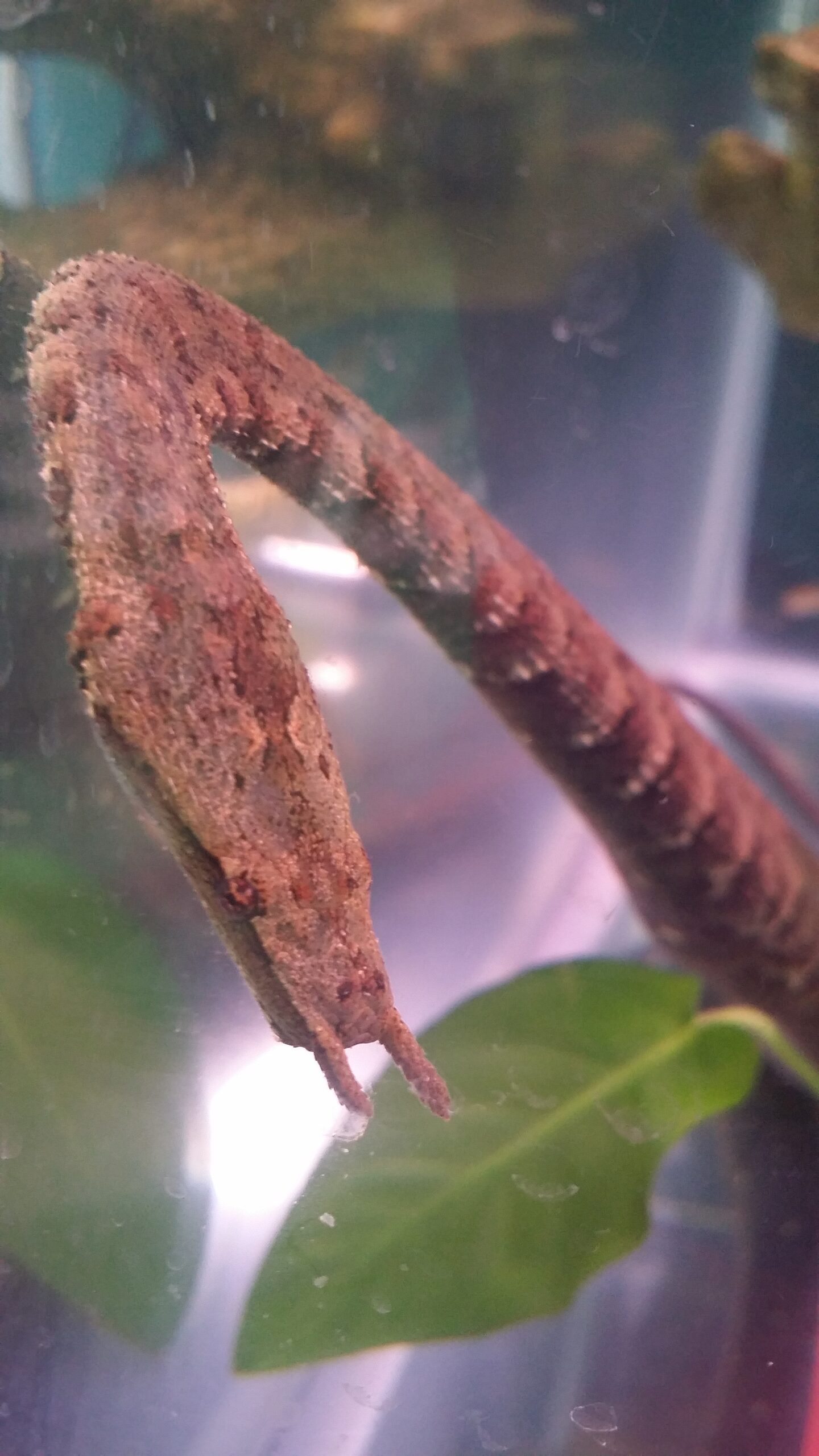In the murky waters of rivers and streams across Southeast Asia, a master of disguise silently hunts. The tentacled snake (Erpeton tentaculatum) employs one of nature’s most remarkable camouflage techniques, using river debris and its unique physical adaptations to become virtually invisible to both prey and predators. Unlike many camouflaged creatures that rely solely on color patterns, this snake has evolved specialized structures and behaviors that allow it to blend seamlessly with waterlogged branches, leaves, and sediment. Its exceptional hunting strategy and perfect adaptation to aquatic environments make it one of the most fascinating yet understudied reptiles in the world. This fully aquatic ambush predator represents an extraordinary example of evolutionary specialization, having developed traits specifically designed for its unique ecological niche.
The Tentacled Snake’s Distinctive Appearance

The most striking feature of the tentacled snake is the pair of fleshy, scale-covered tentacles protruding from its snout, which serve as sensory organs rather than decorative appendages. These tentacles contain numerous nerve endings that help the snake detect vibrations and movements in the water, essentially functioning as an early warning system for approaching prey. Measuring between 20 to 35 inches in length, the snake displays a brownish-gray or reddish-brown coloration with darker mottling that perfectly mimics decaying vegetation. Its body is relatively slender with a slightly flattened appearance, and its scales are heavily keeled, creating a rough texture that further enhances its resemblance to waterlogged twigs and debris. The snake’s eyes and nostrils are positioned on top of its head, allowing it to breathe and see while keeping most of its body submerged.
Natural Habitat and Distribution
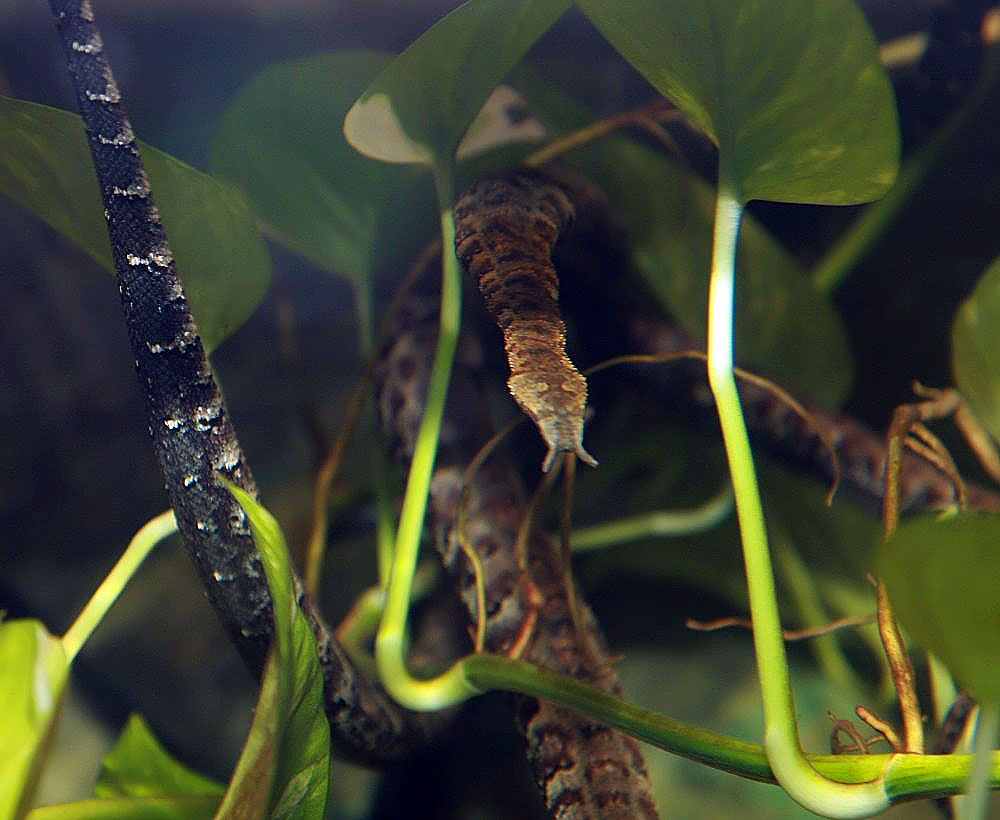
Tentacled snakes are exclusively found in freshwater habitats throughout Southeast Asia, including Thailand, Cambodia, Vietnam, and parts of Indonesia. They prefer slow-moving or stagnant waters where vegetation is abundant, such as rice paddies, swamps, marshes, and the sluggish backwaters of rivers. These environments provide the perfect combination of prey availability and camouflage opportunities that the snake has evolved to exploit. Unlike many semi-aquatic snakes that occasionally venture onto land, tentacled snakes are completely aquatic, spending their entire lives in water and even giving birth to live young underwater. Their distribution is closely tied to areas with monsoon seasons, as these create the ideal shallow, plant-filled aquatic environments where the snake can thrive among floating vegetation and submerged branches.
The Art of Debris-Based Camouflage
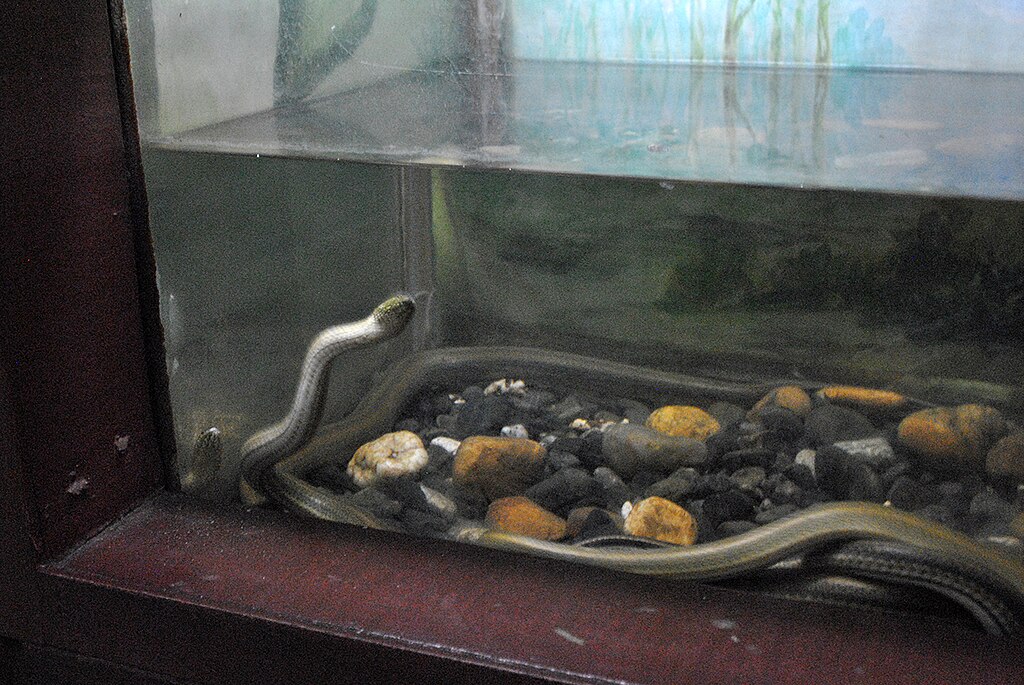
The tentacled snake has mastered a sophisticated form of camouflage that incorporates river debris directly into its concealment strategy. Rather than simply resembling debris, the snake positions itself among actual floating vegetation, fallen leaves, and waterlogged branches, becoming part of the debris field itself. Its body posture—typically held in a rigid, angled position—mimics the appearance of a broken twig or branch. The snake will remain completely motionless for hours or even days, allowing algae, diatoms, and small aquatic organisms to grow on its skin, further enhancing its disguise. This patient approach ensures that the snake literally becomes part of the underwater landscape, with its keeled scales collecting sediment particles that blur the outline of its body against the murky background. Even when the snake does move, it does so with such slow, deliberate movements that it appears to be nothing more than debris drifting with the current.
Evolutionary Adaptations for Aquatic Life

Every aspect of the tentacled snake’s anatomy has been shaped by its fully aquatic lifestyle, representing a remarkable example of specialized evolution. Its lungs have developed increased capacity, allowing the snake to remain submerged for extended periods—sometimes up to 30 minutes—without needing to surface for air. The snake’s scales are modified to resist waterlogging and prevent fungal infections that would otherwise plague a permanently wet reptile. Its muscular system has been adapted to maintain rigid, twig-like positions for extended periods without fatigue, enabling its distinctive hunting posture. Perhaps most fascinating is the snake’s heart, which has evolved to function efficiently even during prolonged breath-holding, with specialized hemoglobin that can store oxygen more effectively than that of terrestrial snakes. These adaptations collectively represent one of the most complete transitions to aquatic life seen in any snake species, outdone only by true sea snakes.
A Unique Hunting Strategy

The tentacled snake employs one of the most sophisticated hunting techniques in the reptile world, using its camouflage as the foundation of its predatory approach. After positioning itself in a characteristic J-shaped posture among debris, the snake remains completely motionless, sometimes for days, waiting for fish to approach. When a fish swims near, the snake doesn’t lunge directly at the prey but instead creates a slight movement with its mid-body, triggering the fish’s instinctive escape response. Remarkably, the snake anticipates exactly where the fish will flee and strikes at this predicted location rather than at the fish’s initial position. High-speed camera footage has revealed that this predictive strike occurs in less than 15 milliseconds—faster than a human blink—making it one of the quickest predatory movements in nature. This hunting technique demonstrates not just camouflage proficiency but also a sophisticated understanding of prey behavior that the snake exploits with mathematical precision.
The Mystery of the Tentacles
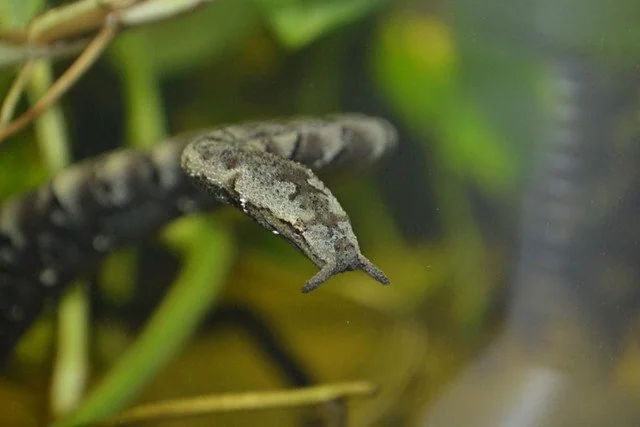
Despite being the snake’s namesake feature, the exact function of the tentacled snake’s facial appendages remains somewhat mysterious to scientists. These short, fleshy projections extend from the front of the snake’s snout and contain no poison glands or venom-delivery mechanisms. Current research suggests they serve as highly sensitive mechanoreceptors, detecting minute pressure changes in the water caused by approaching fish. Some studies indicate the tentacles may also contain chemoreceptors that help the snake detect waterborne scent particles emitted by prey. Interestingly, when the snake is in its hunting position, the tentacles often extend outward at angles that maximize their exposure to water currents from multiple directions. This positioning may help create a three-dimensional awareness of the snake’s immediate surroundings, allowing it to detect prey approaching from any direction while its body remains perfectly still among the debris.
Reproduction and Life Cycle

The tentacled snake is viviparous, giving birth to live young rather than laying eggs, which represents another adaptation to its fully aquatic lifestyle. Female snakes typically produce litters of 5 to 13 offspring, with the young being born fully developed and immediately capable of hunting small fish. The birthing process occurs entirely underwater, with the mother remaining hidden among vegetation and debris during this vulnerable time. Newborn snakes measure approximately 8 inches in length and already display the distinctive tentacles and camouflage coloration of adults, albeit in more vibrant patterns that fade to adult coloration as they mature. The reproductive cycle appears to be synchronized with seasonal water level changes, with births typically occurring as water levels rise during monsoon seasons when small fish are abundant. This timing ensures young snakes have plentiful prey and adequate debris cover during their most vulnerable stage of life.
Relationship with Water Quality

The tentacled snake serves as an important bioindicator for the health of Southeast Asian freshwater ecosystems. Their presence typically indicates relatively unpolluted waters with good oxygen levels and abundant fish populations. Since these snakes rely on their ability to remain motionless for extended periods while breathing through their skin, they are particularly sensitive to water contaminants that might be absorbed through dermal contact. Agricultural runoff containing pesticides and fertilizers has been shown to reduce tentacled snake populations in areas where water pollution is increasing. Additionally, these snakes require a specific balance of submerged vegetation and open water, making them vulnerable to habitat modifications such as channelization, dam construction, and wetland drainage. Conservation biologists are increasingly monitoring tentacled snake populations as part of broader freshwater ecosystem health assessments across Southeast Asia.
The Challenge of Studying Hidden Predators

The very adaptations that make the tentacled snake such a successful predator also create significant challenges for scientists attempting to study it. The snake’s exceptional camouflage makes population surveys extremely difficult, as researchers must meticulously search through vegetation and debris to locate specimens that are virtually indistinguishable from their surroundings. Field studies are complicated by the snake’s ability to remain motionless for days, meaning that even experienced herpetologists might repeatedly overlook individuals during surveys. Laboratory studies present their own difficulties, as recreating the complex debris-filled environments needed for natural behavior requires specialized aquarium setups. Recent advances in environmental DNA (eDNA) sampling techniques have offered new methods for detecting the presence of these elusive reptiles without visual confirmation, allowing researchers to identify waterways where tentacled snakes live by testing for trace amounts of their DNA shed into the water.
Cultural Significance and Local Knowledge
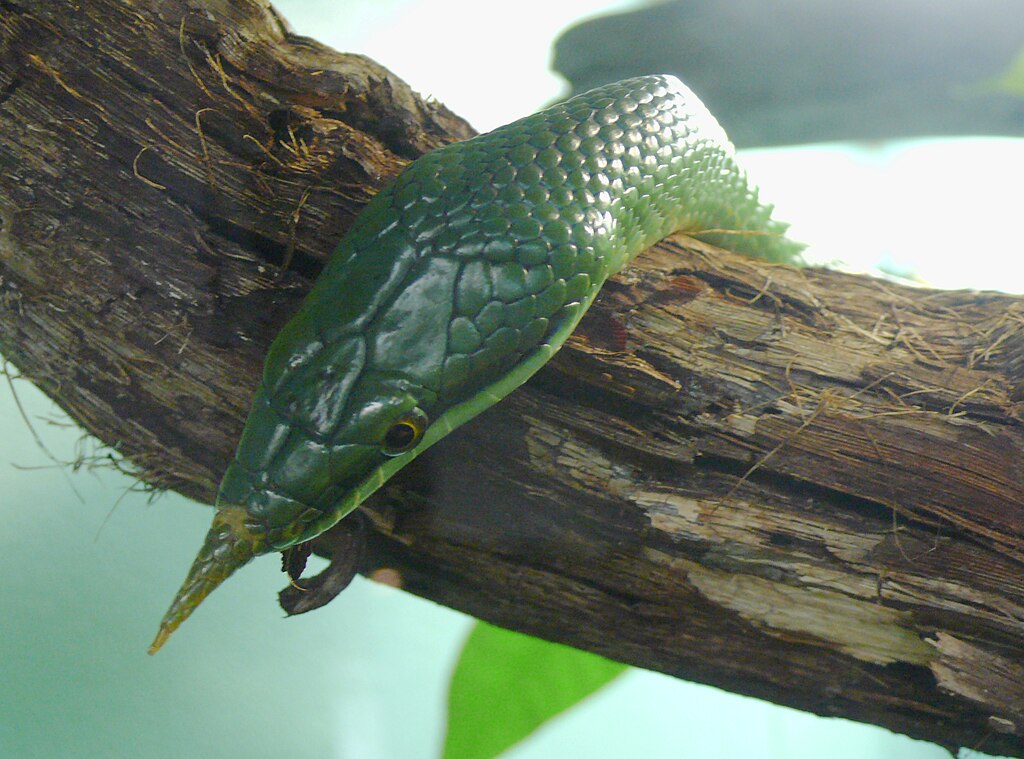
Throughout its range, the tentacled snake features in the folklore and traditional ecological knowledge of local communities. In parts of Thailand and Cambodia, the snake is known as the “water dragon” or “dragon snake” due to its facial tentacles resembling the whiskers often depicted on dragons in local art. Some fishing communities believe encountering the snake brings good fortune, while others consider it a sign that fish populations in that area are healthy. Traditional medicinal practices in Vietnam and Thailand have historically used parts of the tentacled snake to treat various ailments, particularly respiratory conditions, though this practice has declined with modernization and conservation awareness. Local fishermen often possess detailed knowledge about the snake’s habitat preferences and behaviors that has proven valuable to scientific research, highlighting the importance of integrating indigenous knowledge into conservation efforts for this specialized reptile.
Threats and Conservation Status
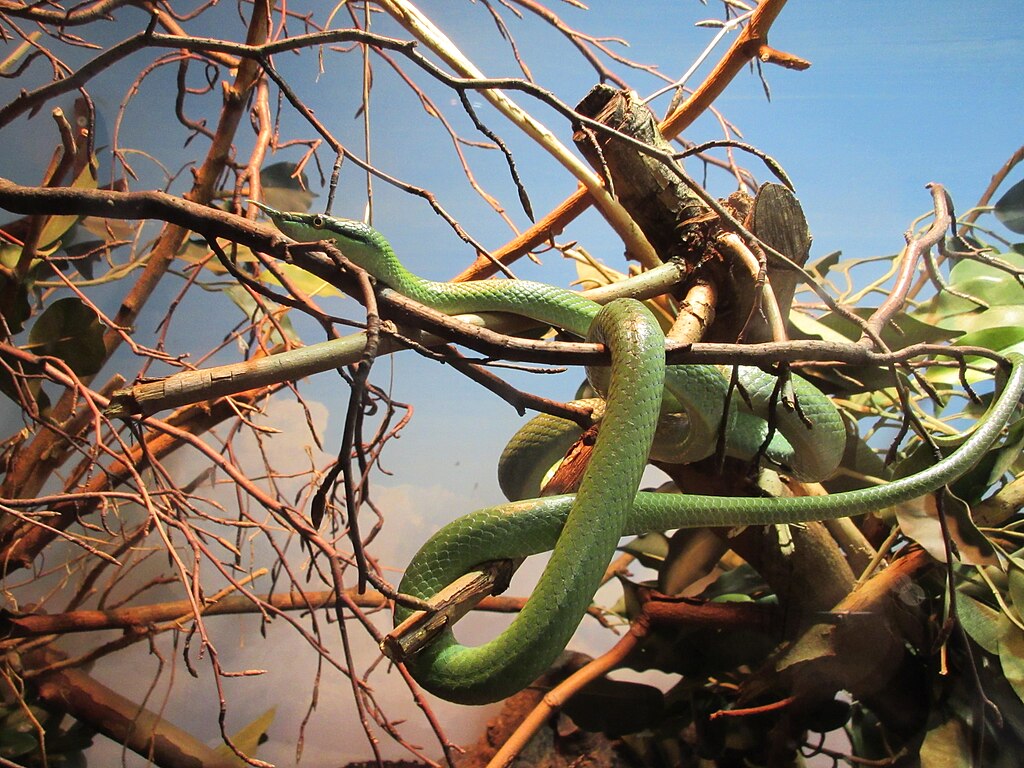
Although not currently listed as endangered, tentacled snake populations face mounting pressures from habitat loss and degradation throughout Southeast Asia. Wetland drainage for agricultural expansion represents the most significant threat, as rice paddy conversion and swamp draining eliminate the snake’s specialized habitat. Water pollution from industrial discharge, agricultural chemicals, and urban runoff degrades water quality in many areas where these snakes historically thrived. Climate change poses an additional challenge, as altered precipitation patterns affect seasonal flooding cycles that the snakes depend on for both hunting and reproduction. While protected in some countries, enforcement is often limited, and incidental capture in fishing nets results in significant mortality. Conservation efforts are complicated by insufficient data on population sizes and distribution, though several zoos and research institutions have established breeding programs to better understand these mysterious reptiles and develop effective protection strategies.
Comparison to Other Camouflage Specialists
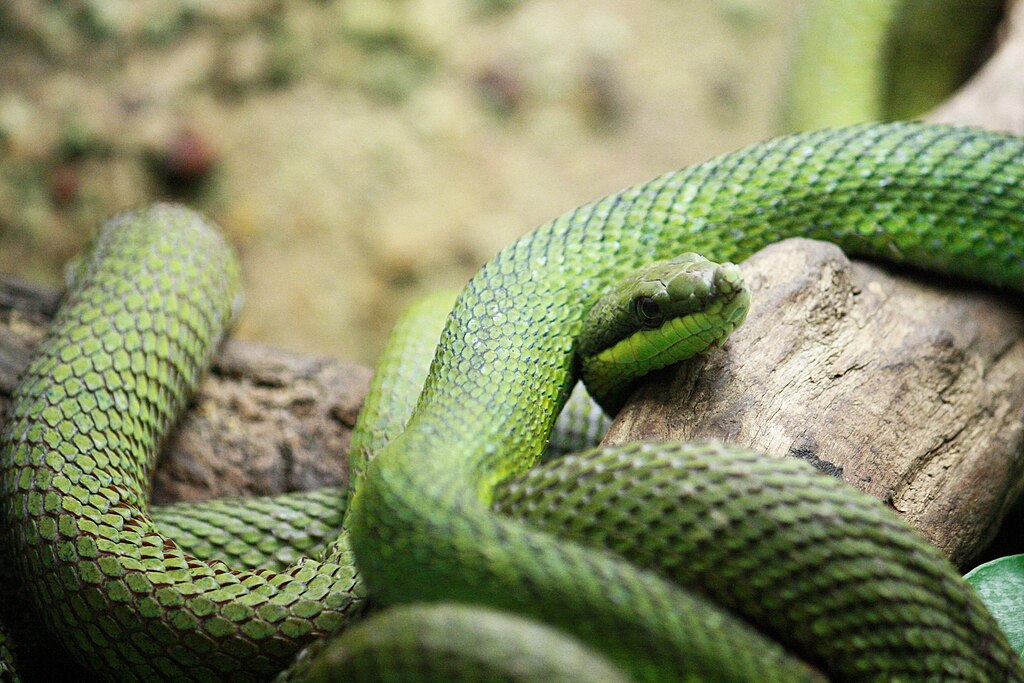
The tentacled snake’s debris-mimicking strategy represents just one evolutionary approach to the challenge of concealment among reptiles. Unlike leaf-tailed geckos or vine snakes that physically resemble specific natural objects, the tentacled snake employs a more integrated approach by positioning itself within actual environmental debris. This differs substantially from the disruptive coloration of pythons or the warning coloration of coral snakes, representing a pure stealth strategy rather than mimicry or aposematism. The tentacled snake’s approach most closely resembles that of the alligator snapping turtle, which uses a worm-like lure on its tongue while remaining camouflaged among river-bottom debris. However, the snake’s method is more sophisticated in its incorporation of behavioral adaptations, specifically its predictive striking technique that compensates for prey escape responses. This combination of morphological adaptation, behavioral specialization, and environmental integration makes the tentacled snake one of the most comprehensive camouflage specialists in the animal kingdom.
Future Research Directions
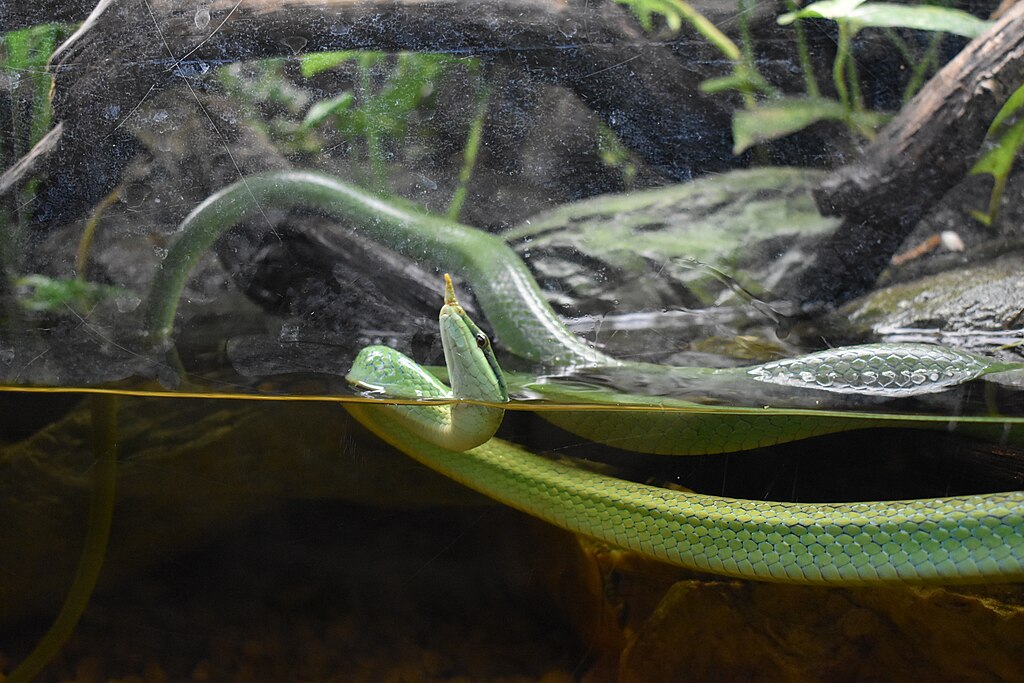
Despite centuries of awareness of its existence, the tentacled snake remains understudied compared to many reptile species, offering numerous opportunities for groundbreaking research. Neurobiologists are particularly interested in understanding the snake’s ability to predict prey movement, which suggests sophisticated neural processing that could inform robotics and artificial intelligence applications. Genetic studies are exploring the evolutionary history of these specialized snakes, potentially revealing when and how they diverged from terrestrial ancestors to become fully aquatic. Conservation biologists are developing new monitoring techniques specifically designed for cryptic aquatic species, using the tentacled snake as a model organism. Perhaps most intriguingly, sensory biologists are investigating the precise function of the facial tentacles, using advanced imaging techniques to map neural pathways from these structures to the brain. As climate change and habitat loss increasingly threaten Southeast Asian freshwater ecosystems, understanding this remarkable specialist has taken on new urgency for both scientific and conservation communities.
The tentacled snake represents one of nature’s most specialized and enigmatic predators, having evolved a comprehensive suite of adaptations that make it the perfect hidden hunter among river debris. From its distinctive facial tentacles to its predictive hunting strategy, every aspect of this snake’s biology is finely tuned for its unique ecological niche. As human activities continue to transform Southeast Asian freshwater habitats, the future of this remarkable specialist remains uncertain. What is clear, however, is that the tentacled snake offers profound insights into evolutionary processes, predator-prey relationships, and the countless ways life has adapted to exploit even the most challenging environments. In the ongoing effort to understand and protect biodiversity, few creatures demonstrate the power of specialized adaptation more dramatically than this master of disguise lurking among the river’s forgotten debris.

